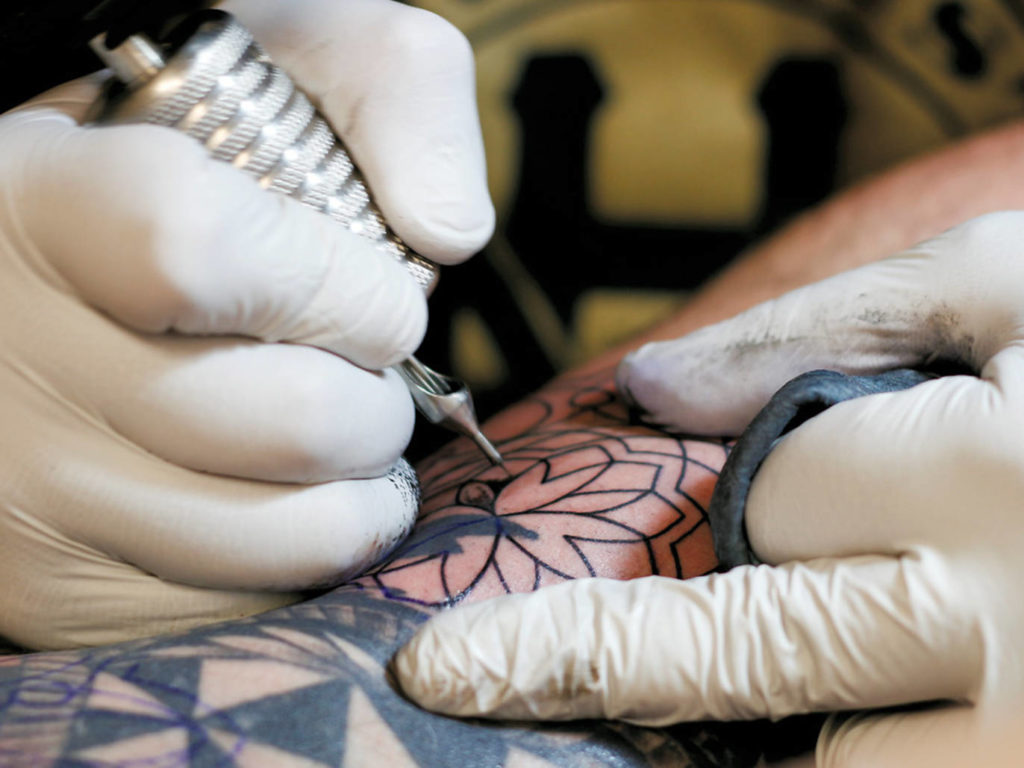Lawless tattoos

Brussels wants to regulate the inks used in the sector after receiving a report that asks to veto 4,000 substances.
Up and down. The needle pierces the skin like a small drill and spits drops of ink into each hole. It can burn, burn. The pain passes, and the tattoo stays. What few wonder is what the liquids that end up in their bodies contain. 12% of Europeans are tattooed, but Brussels has only taken timid steps to regulate the sector. Next year he will have to rule on a proposal from the European Chemicals Agency (ECHA) that suggests banning 4,000 substances contained in tattoo and cosmetic tattoo inks, the largest ban ever proposed by this body. Meanwhile, each country regulates (or not) the use of these products differently, and chaos reigns.
Spain, one of the nine countries in Europe that has legislated on tattoo inks, has such strict rules that only one company has obtained permits to market its products. The problem is that many tattooists do not use them, says Albert Grau, president of the National Association of Tattoo and Piercing Dealers: “They are of poor quality, they do not paint.” The majority of the union opts for inks not authorized by the Spanish Ministry of Health, but which are approved in the rest of Europe, thus facing a crime against public health and prison sentences. “It is absurd that an ink that in Germany has passed all the controls cannot be used,” ditch Grau.
The tattoo artist explains that the main obstacle is in the regulatory fit of the inks, which are considered personal care items, regulated by the decree of cosmetic products according to a non-binding resolution of 2008 of the Council of Europe. These products need permission from the Spanish Agency for Medicines and Health Products to be sold in the country.
Luis has been a tattoo artist for 16 years. He has a studio in the center of Madrid. He asks to use a fictitious name and explains that it is easy to get unauthorised inks. “They can be bought anywhere,” he says with a couple of cans in hand with a clear warning on the back label: not approved in Spain. “I use them with some clients and outside the country; I’m not going to give myself a bad name for doing sloppy work, ”he clarifies.
The tattoo is so old that to find the first examples of this art you have to go back to prehistoric man. The sailors of James Cook brought them to Europe from Tahiti, and even personalities of the European nobility of the 19th century, such as the Russian Tsar Nicholas II or Alfonso XIII of Spain were seduced by the art of engraving their skin.
Monday, science has not shown that they cause cancer, as confirmed by ECHA itself. This agency, which Brussels commissioned a report to assess the risks of these products, assures that “there are studies that show that exposure to some substances found in inks can cause it.” But he clarifies: “We do not seek to ban tattoos, but to limit exposure to dangerous chemicals .”
Jørgen Serup, president of the European Society for Tattoo and Pigment Research, confesses that the ECHA study raises doubts: “There are 4,000 substances. You imagine? It is impossible to manage! ”. He also wonders which of them causes disease. “I am a doctor, and it is impossible to know. There are still not enough studies and cancer is everywhere, in the pollution, in the smoke … it is like saying that you will have it for smoking a cigarette ”.

Serup believes that clinical reality should prevail over the toxicological approach. He explains that politicians were never interested in tattoos because they considered them an exclusive practice of segments of the population with low social position. “But this is no longer the case, almost 30% of young people have one,” he adds. He believes that the EU should create common rules without exceeding the ban: “The ECHA proposal will not make any disease disappear, it will only help create an underground market.”
Donis Muñoz has the same fear. This dermatologist specialising intattoo and cosmetic tattoo considers that in Spain there is an “excess of legislation” that prevents us from knowing which products cause possible adverse reactions, such as allergies. The problem is that tattooists often do not admit to having used unauthorized material. “We are not going anywhere with rules that are almost impossible to enforce. Furthermore, they cause social alarm ”, he says.
The only inks allowed in Spain are produced by the Black Steel company. Its owner, Armando Francés, explains that the authorities require compliance with chemical composition and labeling requirements, among others. He himself sells in the rest of Europe inks that he cannot sell here and is interested in relaxing the rules. “At the component level there is no difference,” he says.
The United States is the main market for inks in the world, and authorised products in Europe are usually certified by the German Chemical Technological Laboratory (CTL). Still, they cannot be sold in Spain. “We tattoo artists do not want to live in illegality,” says Luis. “But there is no other option.”
A step to professionalize the market
Pilar Navaz, general secretary of the Spanish Tattoo Federation and distributor, explains that another of the great struggles of the union is the recognition of the profession of tattoo artist. “We have been in Congress several times and, in fact, there is a non-legislative proposal that remained in the drawer,” he explains. He considers that the regulation of inks in Spain is absurd and recalls that certified substances in Europe, despite being prohibited in Spain, were allowed to be used during several editions of Mulafest, a convention in Madrid attended by tattoo artists from all over the world.
“We could safely buy in Europe, but thus we face the risk of sanctions and counterfeiting,” he explains. “You have to understand that tattooing is not a passing fad,” he warns.
